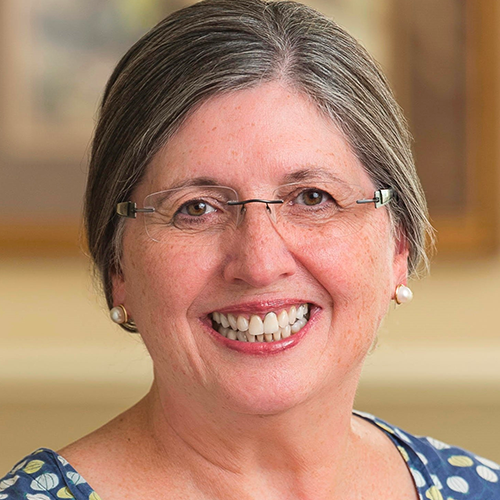
The Point Blog ARCHIVE
All articles found in the archive are more than three years old.
The purpose of this blog is to stimulate thought and discussion about important issues in healthcare. Opinions expressed are those of the author and do not necessarily express the views of CMDA. We encourage you to join the conversation on our website and share your experience, insight and expertise. CMDA has a rigorous and representative process in formulating official positions, which are largely limited to bioethical areas.
A Wrong Turn on the Right Path?
December 20, 2018
by D. Joy Riley MD, MA (Ethics)
In 2008, Richard Hayes, founding executive director of the Center for Genetics and Society, testified before a Congressional Subcommittee regarding human germline modification. He provided a “Summary of National Policies.” According to Hayes, 44 nations specifically prohibited “inheritable genetic modification” at that time. These were Australia, Austria, Belgium, Bosnia and Herzegovina, Brazil, Bulgaria, Canada, Columbia, Costa Rica, Croatia, Cyprus, Czech Republic, Denmark, Estonia, Finland, France, Georgia, Germany, Greece, Hungary, Iceland, India, Israel, Italy, Japan, Lithuania, Moldova, Netherlands, New Zealand, Norway, Peru, Portugal, Romania, Singapore, Slovakia, Slovenia, South Africa, South Korea, Spain, Sweden, Switzerland, Turkey, United Kingdom and Vietnam. The United Kingdom has since modified its stance, but the United States, it should be noted, had “no policy” then—or now.
Ten years on, we are bearing some of the fruit of our policies (or lack thereof). Neither China nor the United States have prohibited human germline engineering. This fact was prominently displayed at the Second International Summit on Human Genome Editing in Hong Kong, which was held November 27-29. Even before the meeting began, Chinese scientist He Jiankui fired an opening salvo in the race to edit the human germline. Dr. He announced that he and his team had edited human embryos in an attempt to produce children who are resistant to HIV, cholera and smallpox by virtue of having their copies of gene CCR5 eliminated. Twin girls, whose germlines have been so edited, have been born, according to He.
An international outcry ensued. Francis S. Collins, MD, PhD, director of the U.S. National Institutes of Health, said in his official response to Dr. He’s announcement, “Should such epic scientific misadventures proceed, a technology with enormous promise for prevention and treatment of disease will be overshadowed by justifiable public outrage, fear, and disgust.” Julian Savulescu, director of Oxford’s Uehiro Centre for Practical Ethics, called the experiment “monstrous.”
The cacophony of the outrage obscured and practically drowned out the announcement of Harvard’s plans to gene edit sperm. Reproductive endocrinologist and scientist Werner Neuhausser, from Harvard’s Stem Cell Institute, announced plans to use CRISPR to genetically edit human sperm. Antonio Regalado of MIT Technology Review described the objective as showing “whether it is possible to create IVF babies with a greatly reduced risk of Alzheimer’s disease later in life.”
This is not Neuhausser’s first foray into gene editing. An earlier MIT Technology Review article in August 2017 described Neuhausser’s ongoing work to edit sperm so that a gene that causes amyotrophic lateral sclerosis (ALS) is eliminated. He seemed to prefer the concept of using induced pluripotent stem (iPS) cells, however:
…Neuhausser says the more precise approach would be to make genetic corrections in iPS cells instead. These cells grow and multiply vigorously in the lab. Once they were edited, then eggs or sperm could be created from them. “You would gain access to the genome; you could change the genome at will. It’s controversial, of course,” he says. “But we should definitely investigate whether it works or not.”
How does one know truly that a gamete “works?” Obviously, that means successful fertilization must occur. Fertilization of an egg by a sperm—whatever their origins—results in an embryo. Embryos have usually one of four dispositions: further research, transfer to a uterus, being frozen for later use or disposal. All of these fates are well known to IVF doctors and stem cell scientists.
George Q. Daley, a stem cell scientist who is now Dean of Harvard Medical School, also spoke at the Second International Summit on Human Genome Editing in Hong Kong in November 2018. Daley, at a question-and-answer session, talked of working toward societal consensus regarding gene editing, and recommended binding regulation only if there were “widespread flouting of…common principles” in gene editing work. Daley thinks “we aspire to universal principles,” but recognizes that he himself is a utilitarian, stating, “In everyday life, especially as a physician, I use sort of utilitarian principles all the time.” According to Antonio Regalado’s reporting, Daley asserted that Dr. He had simply taken “a wrong turn on the right path.” Thus, the protest to Dr. He does not seem to stem from underlying disagreement with the genetic modification of human beings. It appears more to be a disagreement of timing or details of methodology. What should we make of the “international outcry?” The scientist doth protest too much, methinks.

